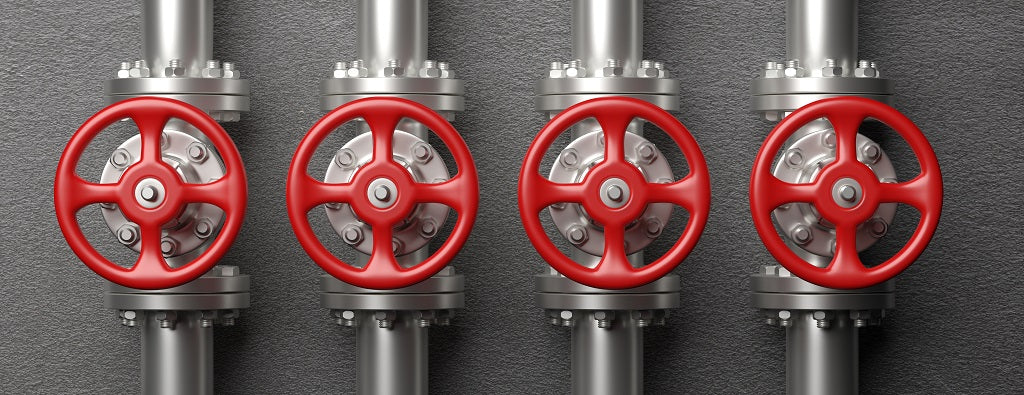
Maximize Energy Savings and Convenience With Advanced Structure Automation Controls
In the realm of modern architecture and facility monitoring, the assimilation of innovative building automation controls stands as a pivotal advancement. The merging of modern technology and sustainability has birthed a brand-new age where power performance, convenience optimization, and functional streamlining are no longer obtainable realities but distant goals. By utilizing the power of automation, buildings can adjust, react, and develop in methods that were as soon as unbelievable. The possibility for substantial energy cost savings and enhanced convenience is not just an opportunity yet a pledge waiting to be met. This standard change in structure management holds the crucial to unlocking a globe where environmental conscientiousness and passenger health sympathetically coexist within the wall surfaces of our structures.
Energy Performance Advantages
Power performance benefits can substantially minimize power usage and operational prices in buildings. By executing energy-efficient techniques and modern technologies, building proprietors and drivers can achieve significant savings while additionally adding to environmental sustainability. One of the primary advantages of enhancing energy effectiveness in structures is the decrease of utility costs. Energy-efficient systems, such as advanced structure automation controls, can optimize making use of resources like home heating, air conditioning, and lighting, causing lower power expenses in time.
In addition, boosted energy performance can lengthen the life-span of building equipment and systems. By operating much more efficiently, heating and cooling systems, light, and various other structure parts experience less deterioration, resulting in lowered upkeep and substitute prices. Furthermore, energy-efficient structures typically regulate greater property worths and rental prices, providing long-term monetary benefits to owners.
In addition, energy efficiency can boost owner comfort and efficiency. Appropriately controlled interior settings with ideal illumination and thermal problems produce an even more helpful and pleasant workspace, bring about improved employee complete satisfaction and performance. Overall, the power effectiveness benefits connected with innovative structure automation controls are diverse, including price financial savings, ecological stewardship, and occupant well-being.
Improved Convenience Control
Enhancing comfort control in building environments calls for an innovative combination of advanced automation systems for optimal owner health. By making use of innovative structure automation controls, centers can tailor the indoor environment to fulfill the details demands and preferences of residents. control valves.
By incorporating these advanced controls, structures can not only boost convenience however also boost energy performance by maximizing system operations based on real tenancy and usage patterns. Eventually, prioritizing resident convenience via advanced automation systems leads to a much more enjoyable and healthier indoor setting.
Operational Efficiency Improvements

Additionally, the application of real-time monitoring and analytics devices enables building drivers to determine energy inadequacies and operational anomalies quickly. By continuously checking energy usage patterns and system performance metrics, adjustments can be made in real-time to enhance power consumption and guarantee peak functional performance. control valves. Additionally, incorporating demand feedback strategies into structure automation controls can better improve functional efficiency by dynamically readjusting energy usage based upon grid problems and rates signals
Indoor Climate Optimization
Efficient interior Related Site environment optimization is a basic aspect of building automation controls, making certain occupants' comfort and well-being while making the most of energy financial savings. By utilizing advanced sensors and controls, developing automation systems can constantly adjust and keep an eye on temperature level, moisture degrees, air quality, and ventilation to produce an optimum indoor setting. Keeping comfortable and regular problems not only enhances resident fulfillment however additionally boosts efficiency and general wellness.
Indoor climate optimization also plays an important function in power effectiveness. By fine-tuning cooling, home heating, and ventilation systems based upon real-time data and occupancy patterns, developing automation controls can substantially lower energy consumption - control valves. Applying methods such as demand-controlled ventilation and thermal zoning can assist minimize power waste while ensuring that each location of the building gets the necessary conditioning.

Sustainable Environment Creation
Structure automation regulates not just enhance indoor climate problems for power effectiveness and resident comfort but additionally lay the structure for developing a lasting atmosphere with strategic management of systems and resources. By integrating advanced building automation technologies, such as sensors, actuators, and intelligent software, facilities can keep track of and change power usage in real-time to reduce waste and reduce their carbon footprint. These systems enable anticipating maintenance, recognizing possible concerns before they escalate and enhancing equipment efficiency to improve long life and efficiency.
Moreover, lasting environment production extends past energy monitoring to encompass water preservation, waste reduction, and interior air quality renovation. Building automation controls can manage water usage, spot leakages, and make sure proper garbage disposal techniques, adding to total sustainability efforts. In addition, by monitoring and managing ventilation and purification systems, these modern technologies enhance owner wellness and efficiency while reducing energy intake connected with heating and cooling operations.
Conclusion
Finally, progressed building automation manages offer substantial advantages in terms of power cost savings, comfort control, functional efficiency, interior environment optimization, and producing a sustainable atmosphere. By applying these controls, buildings can attain optimal efficiency while decreasing power consumption and enhancing owner comfort. It appears that making use of sophisticated automation technology is critical in enhancing structure performance and producing an extra lasting future.
Power efficiency benefits can substantially lower energy usage and functional expenses in structures. On the whole, the energy efficiency benefits connected with innovative structure automation controls are multifaceted, encompassing price savings, environmental stewardship, and resident well-being.
Furthermore, incorporating need action strategies into building automation controls can Check This Out better improve operational performance by dynamically readjusting energy usage based on grid problems and prices signals.
Building automation regulates not only optimize interior climate conditions for power performance and passenger comfort but also lay the structure for developing a lasting atmosphere with calculated management of sources and systems.In conclusion, progressed structure automation manages offer significant benefits in terms of energy savings, comfort control, operational effectiveness, interior climate optimization, and developing a sustainable setting.
Comments on “Innovative Control Valves: Enhancing Precision and Reliability”